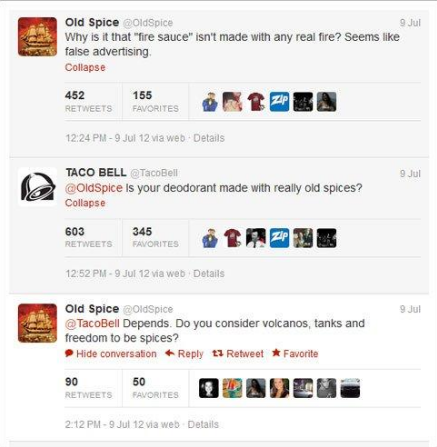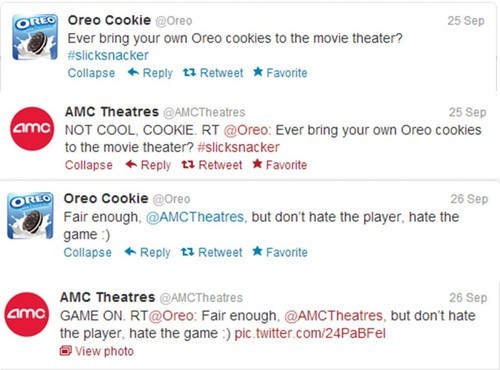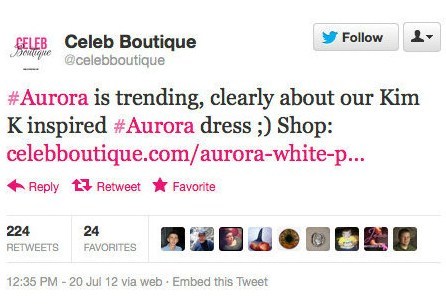Mad-Eye Moody: A Role Model for Social Strategy?
(Eleanor Dowling is the Associate Marketing Manager at Bluefin Labs - a Startup Institute hiring partner.) Mad-Eye Moody: A Role Model for Social Strategy?
I love Harry Potter. I’ve read the entire series (more than once, of course) and seen all the movies. But recently, I realized the story might have impacted my life more than I thought. Apparently the social media strategy I’ve crafted and employed at Bluefin Labs was inspired by a most unlikely character: Mad-Eye Moody.
You see, Mad-Eye Moody’s catch phrase is “constant vigilance.” And whether you’re fighting Death Eaters or trying to win at social media for your employer, these are words by which to live.
These days, social marketers everywhere are preaching how “content is king.” And while I agree that content is indeed a pillar of social strategy, it’s the way you USE content that matters the most. And more often than not, timing and observation play a huge role in a robust social strategy.
Dialogue matters. In the world of social media, it’s one of the best ways a brand can humanize itself, engage current fans, and reach new customers. But to have a conversation, you need context. And you can only have context if you know what’s going on – and not just in your corner of the world, but also in the social universe at large.
Consider this exchange:

That first Tweet from Old Spice was sent unprovoked, and didn’t even mention @TacoBell. But whoever was running Twitter for Taco Bell immediately picked up on it, and fired back a witty response. Not to be outdone, Old Spice responded in kind.
Doesn’t this just make you SMILE?! Two brands, in completely different sectors, having a spirited debate in public – it’s so human, that you almost forget these are international corporations. Who knows if this exchange led to more taco runs or trips to CVS for Old Spice, but it was a humorous and fun way to infuse branding in social media. And it wouldn’t have been possible if these social managers weren’t vigilant about what was being discussed on Twitter.
Here’s another example of how constant vigilance and dialogue can lead to great social marketing:

Here, the AMC social manager took it a step further with a funny picture. In our age of social media and visual sharing, this is brilliant marketing. That image of a dude with Oreos in his eyes is hard to forget, and when paired with the AMC logo at the top, it has my subconscious screaming to buy some Oreos and then go see a movie at AMC.
Marketing is changing. Old philosophies and strategies that worked for TV and print can’t just be slapped on to a social media program. The social world is smart – they know when they’re being marketed to. But if you know how to do it right, it will be accepted as part of the social dialogue instead of demonized as unsolicited advertising.
But good social marketing isn’t, and shouldn’t be, just about crafting the wittiest Tweet. When Hurricane Sandy hit the East Coast recently, many brands used Twitter and Facebook to monitor events and reach out to affected customers. Take Duracell, for example:

Duracell didn’t just send a couple of these #PowerForward Tweets right after the storm. As of November 12, there are still people without power – so Duracell is still Tweeting about where charging stations can be found. I can’t say for sure, but I bet the name “Duracell” will remain in many of these consumers’ minds long after the power returns.
So, what happens when you AREN’T vigilant in social media? This Tweet was sent by a UK company hours after the July massacre at a movie theater in Aurora, Colorado:

Clearly, the social media manager didn’t click to see why #Aurora was a trending topic. By trying to quickly insert themselves into a conversation they knew nothing about, Celeb Boutique messed up and had to deal with a huge backlash from offended citizens not just in America, but all over the world.
Personally, I think it’s because of cases like Celeb Boutique that brands and companies don’t take more risks in social. Managers and execs are petrified about saying the wrong thing, posting at the wrong time, and having to put out the resulting PR fires. So many just stick to pushing approved [read: boring] messages, dipping nary a toe into the dialogue waters.
They should throw fear out the window, because social media gives marketers a unique ability to advertise without “advertising.” With constant vigilance, brands can start to insert themselves into social media. And that human touch can make all the difference.
